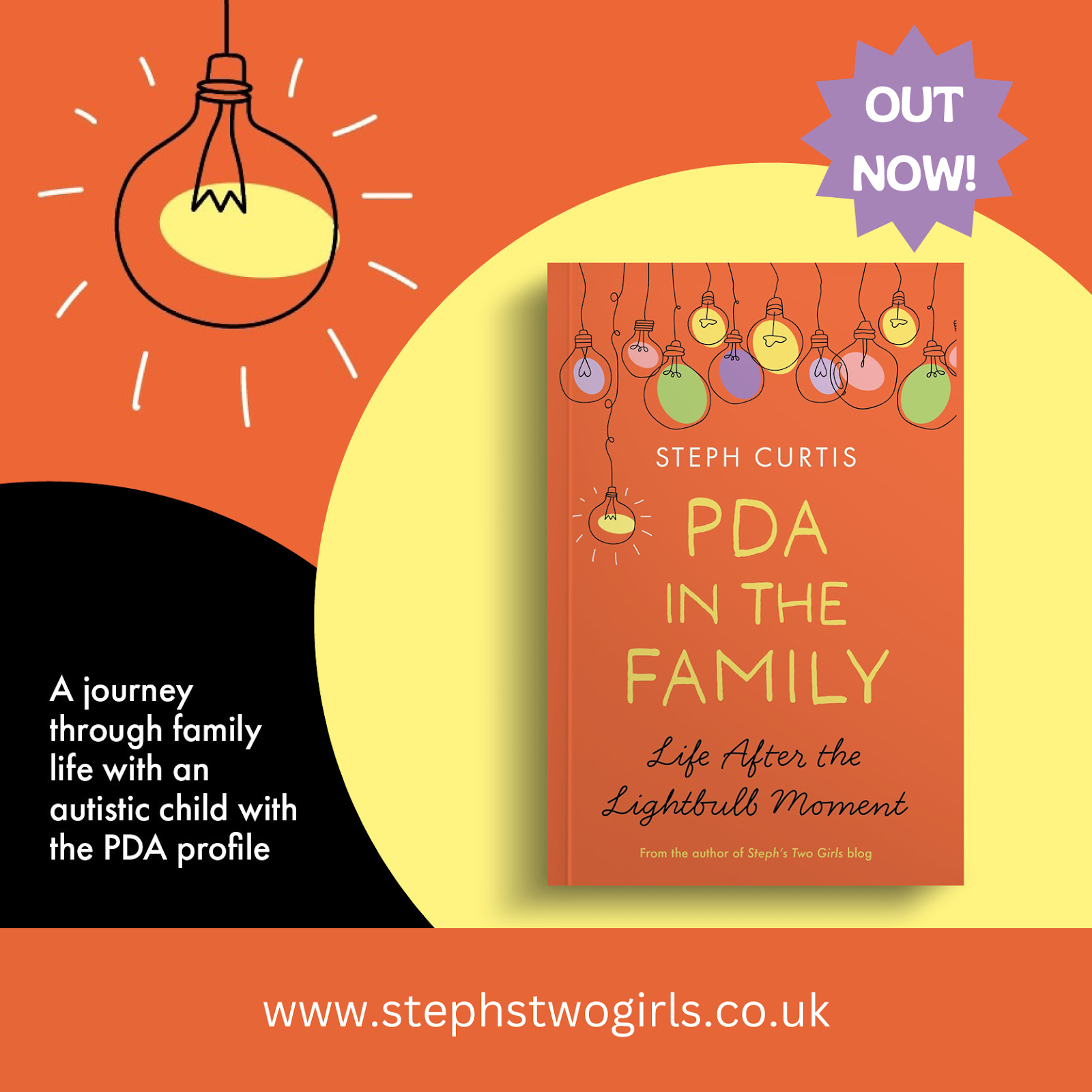Regular readers of this blog will know that our youngest daughter is autistic. Sasha was diagnosed with autism spectrum disorder (sometimes referred to as autism spectrum condition, often shortened to autism) at the age of two. Several months later we stumbled across the characteristics of a little known type of autism called Pathological Demand Avoidance (PDA) on the internet and realised it described our daughter to a T, more so than the more general descriptions for autism.
Historically it was noted that the male to female ratio for autism was 4:1 (meaning four boys were diagnosed for every girl diagnosed). This could be why the question about girls is asked so frequently still. Word on the ground is that it's likely that many girls go undiagnosed, as they seem to be better at masking their autism. There's a great post I recommend for everyone over on the National Autistic Society website which summarises various research undertaken on autism male/female ratios.
In one of Elizabeth Newson's early articles on PDA (Pathological demand avoidance syndrome: a necessary distinction within the pervasive developmental disorders), it is stated that from 150 cases of suspected PDA, the sex ratio was equal boys to girls. Although it's obviously not scientific research, I would also say that from all the parents I've been in touch with over the years since running training about PDA on behalf of the PDA Society, there seems to be equal numbers of boys to girls with PDA.
As a parent, it has been such a relief to me to connect with other parents of autistic girls, particularly those who present more with the PDA profile. Even as I type that, I'm struggling to vocalise why gender matters. There is just something intrinsically different about boys and girls (apart from the body parts, obviously!), maybe in the way that the brains function or what kind of activities are favoured. That is of course a mass generalisation and I can only go on to explain our situation. Sasha is not a fan of boys. Even though she doesn't necessarily favour activities or hobbies other girls of her age might (she's not bothered about make-up, or music, or boys), and she's keen on gaming (Skylanders, Nintendo, Pokemon, Kirby, Mario), she still wouldn't want to play these games with boys.
Sasha is now eleven and it has helped me immensely to speak with parents of autistic girls who are also going through puberty, with all of those related girl challenges. As Sasha grows older, I hope she will be able to relate to autistic women, although only time will tell of course. That's why I'm always pleased to hear from female autistic adults such as Carly Jones and Peri from Not Raingirl. It's also great to see news of one of Carrie Grant's autistic daughters earning a part in the Hollyoaks TV series, portraying an autistic girl.
Then there's fantastic Siena Castleton, a 16 year old autistic young adult who is promoting positivity with her Neurodiversity Celebration Week campaign, and the founder of Me.Decoded, which has been set up as a place to bring together the Neurodivergent who are willing to share insights into themselves, and the advocates/allies who can help change things from the inside out. The more representation that there is of autism in media generally, the more chance there is of other people beginning to understand more.
Over on YouTube, Purple Ella has published a great range of videos on her channel, explaining autism through her eyes, and Agony Autie has also produced many great videos about autism. I particularly loved this video from Chloe me just me, a young girl answering questions about what life with PDA is like for her:
One of the first books I read after Sasha's diagnosis was this one by Eileen Riley-Hall, called Parenting Girls on the Autism Spectrum.
 |
| *This post contains affiliate links; I may receive a small commission if you use them. |
Another book I recommend to any parents of autistic girls is 'My Daughter Is Not Naughty'. Written by Jane Sherwin, who was one of the few PDA bloggers around back when I first started blogging, this book described so many situations, thoughts and feelings which both my daughter and I were going through (and still are).
Another blogger I love who writes about experiences with autistic daughters is PDA Parenting. There are also adult PDAers sharing their experiences - Julia Daunt, at Me, Myself and PDA and Riko's PDA journey. Riko is also writing separately about being a mother to her autistic boys - experiences from both genders are equally important.
Every individual with autism is unique and has their own set of characteristics, their own particular challenges in different areas and varying strengths of course. There are plenty of boys who mask and who are said to have a more female presentation, and plenty of girls who don't mask at all. Strangely, those girls don't seem to be labelled as having a male presentation of autism, they are just seen as autistic in their own right. Whilst some children with PDA undoubtedly mask, Sasha hasn't masked much at all over the years. I always acknowledged we were lucky because Sasha reacted the same way at school as she did at home, and that possibly helped us to be believed as parents.
As Sasha has matured, we have noticed some masking creeping in at times. A comment was made recently that it could be seen to be a good thing if she masks, as that shows more awareness of her wanting to fit in with people and her surroundings. This is a fine line to walk though; too much masking undoubtedly leads to mental health issues. We don't want Sasha to hide who she is and so we feel it's important to keep talking about situations and events as much as we can (which, I'll be honest, is pretty difficult with a child like Sasha who is not a fan of discussing anything).
At times it appears that a lot of media and research is currently focusing on the girls who mask and who might go undiagnosed. Two other bloggers I know who write about their non-masking girls are Kelly from It's a Tink Thing and Gemma from Isla's Voice. Gemma's thoughts on gender were that she'd "like to see fewer gender stereotypes. Autism is very individual and not one size fits all, and that’s regardless of gender."
It is important to not create a general impression that all autistic girls are the same, or that as a group all autistic girls are very different to autistic boys. Every autistic child and person has different characteristics, different needs, different strengths and different personalities, in the same way that every non-autistic person is unique. I'd love it if we could simply say 'our girl is autistic' and the response would be 'so what does that mean for her then?' In just a couple of sentences, we would be able to paint a much clearer picture of Sasha which would hopefully help others to understand her better.
For World Autism Awareness Day 2019, Carrie Grant produced this great video showcasing a wide range of autistic girls and adults, along with some parents of female autistics (I *may* have put in a little appearance..). I'd have loved Sasha to take part but she's not yet at a stage where she'd be comfortable talking to a camera about herself. So I volunteered a few words on her behalf:
To find out more about our experiences, please check out our 'About Us' page. If you are looking for more information on Pathological Demand Avoidance, the posts below may help.
What is PDA (Pathological Demand Avoidance)?
Ten things you need to know about Pathological Demand Avoidance
Does my child have Pathological Demand Avoidance?
The difference between PDA and ODD
Strategies for PDA (Pathological Demand Avoidance)
Pathological Demand Avoidance: Strategies for Schools
Challenging Behaviour and PDA
Is Pathological Demand Avoidance real?
Autism with demand avoidance or Pathological Demand Avoidance?
To follow me on other social media channels, you can find me at the following links or click the icons below!





















No comments:
Post a Comment
Comments are always very much appreciated and can really help the conversation go further...